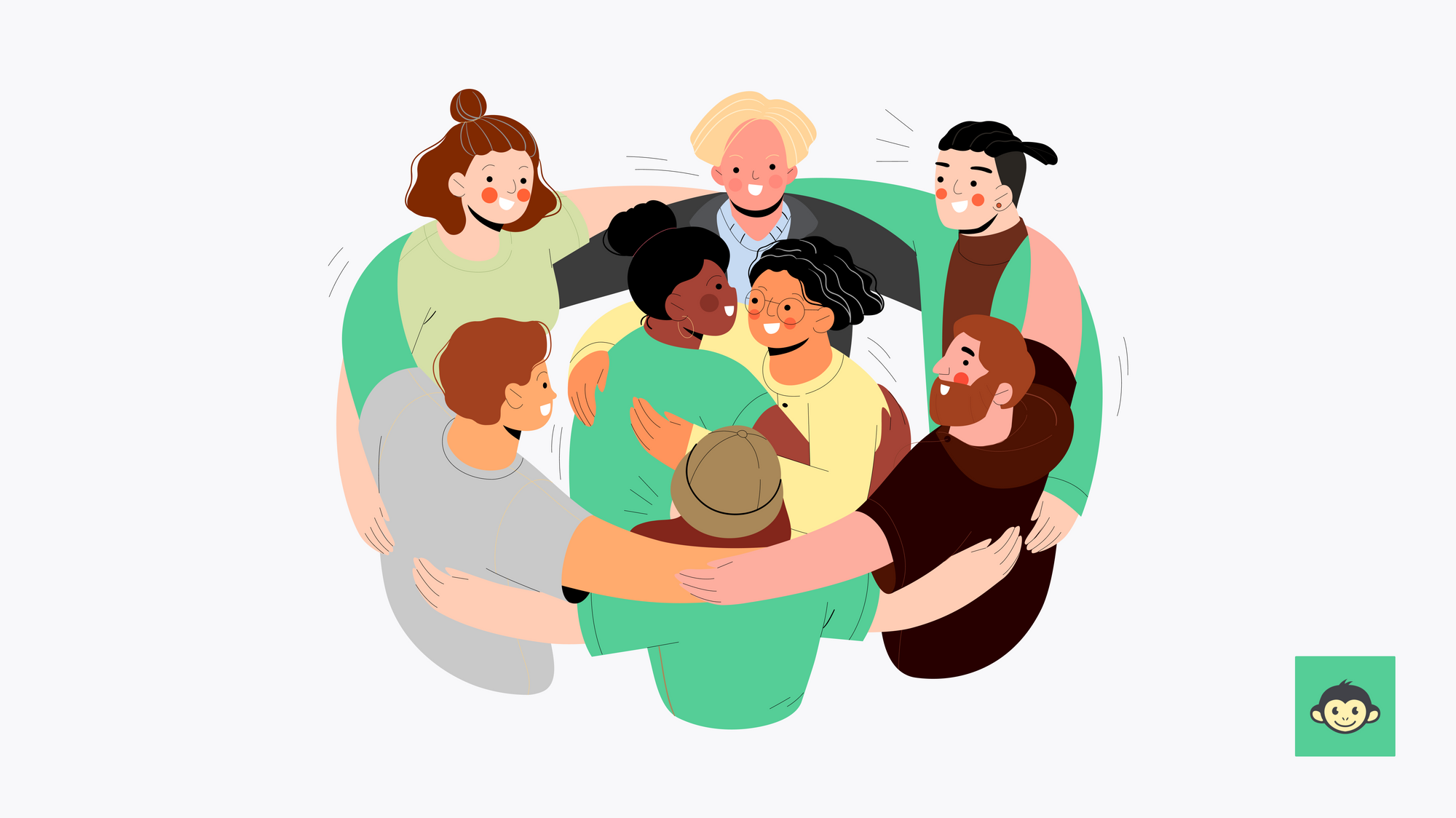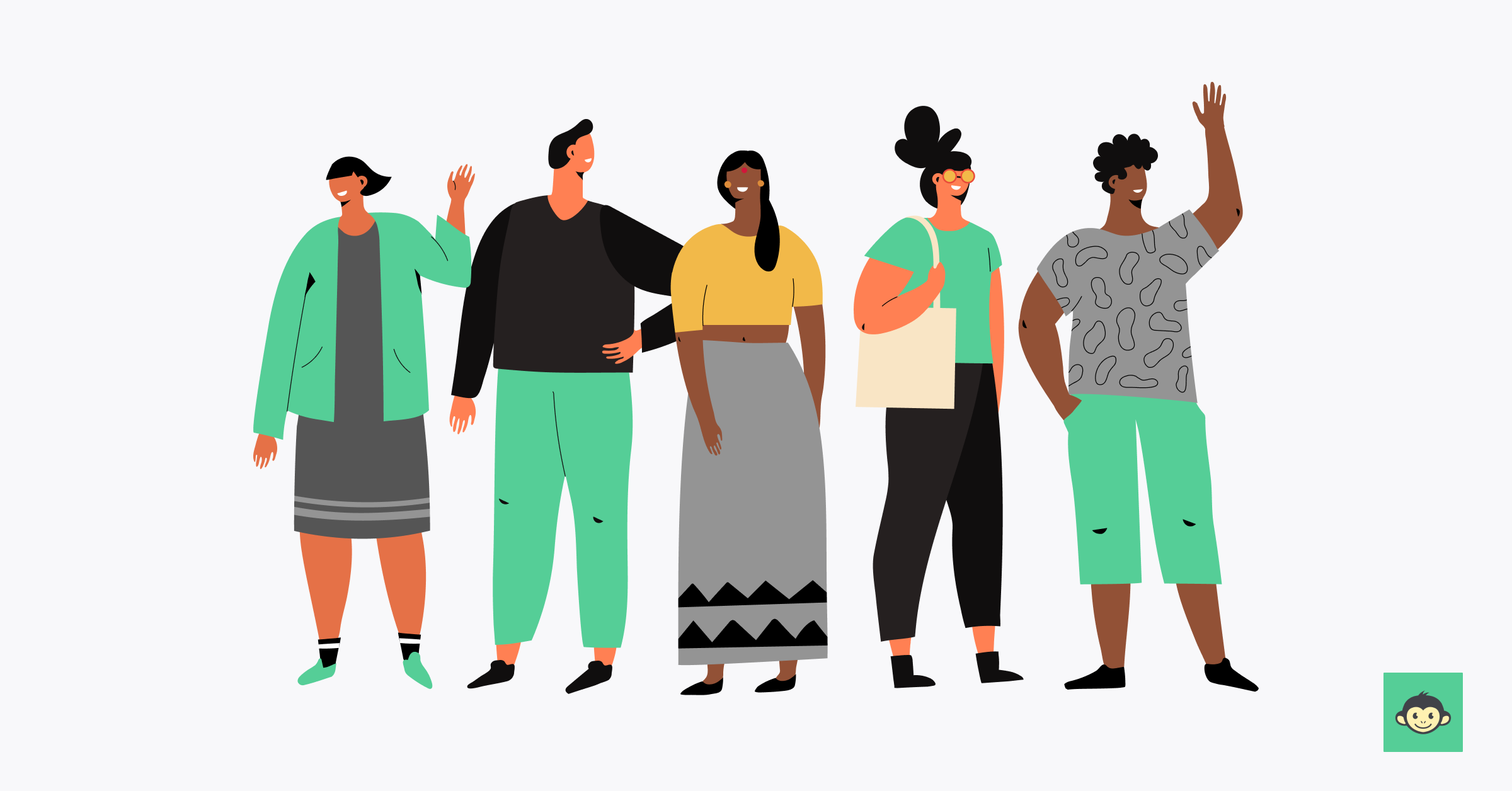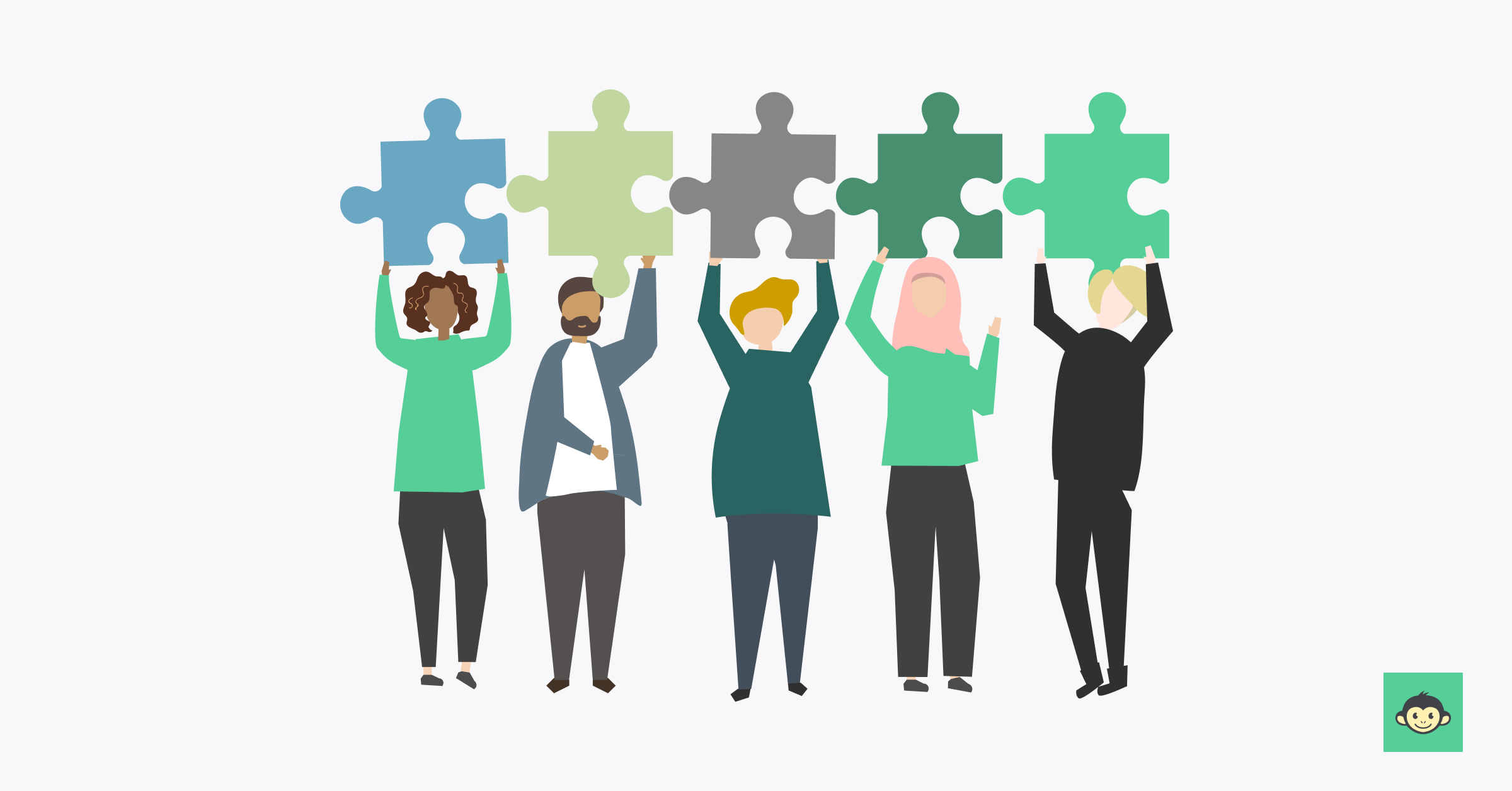Benefits of diversity in the workplace

In today's fast-paced and ever-evolving business landscape, diversity has emerged as a powerful force that drives success and innovation in the workplace. Gone are the days when a homogeneous workforce was considered the norm. Embracing diversity has become a strategic imperative for organizations that aspire to thrive in a globally connected world.
The renowned American author and management consultant Stephen Covey once wisely remarked, "Strength lies in differences, not in similarities." This statement resonates deeply when we think about the numerous benefits that diversity brings to the table.
Diversity encompasses a broad range of dimensions, including but not limited to race, gender, age, ethnicity, religion, sexual orientation, and educational background. When these diverse perspectives, experiences, and talents converge, they create a vibrant tapestry that propels organizations forward.
In this blog, we will delve into the compelling reasons why diversity in the workplace is essential and explore its immense advantages. From fostering creativity and driving innovation to enhancing problem-solving abilities and attracting top talent, we will uncover the transformative power of diversity in driving organizational success.
Advantages of diversity in the workplace

Embracing a diverse workplace yields numerous advantages. From fostering creativity and innovation to improving problem-solving capabilities, organizations prioritizing diversity create a culture of inclusion that propels them forward.
By recognizing the unique strengths and perspectives that each individual brings from different cultural backgrounds, organizations can unlock the full potential of their workforce and reap the rewards of a diverse and dynamic workplace. Let’s take a look at the benefits of diversity in the workplace in detail.
1) Enhanced creativity and innovation
A diverse workforce brings together individuals with different backgrounds, perspectives, and ideas. This rich combination of experiences and viewpoints fosters a creative and innovative environment where fresh ideas are born.
By encouraging employees to share their unique insights, organizations can tap into a wealth of diverse perspectives, leading to breakthrough innovations and out-of-the-box solutions.
2) Improved problem-solving
When faced with complex challenges, diverse teams are more adept at finding effective solutions. Each team member brings their own set of skills, knowledge, and experiences to the table, enabling them to approach problems from various angles.
Diverse perspectives encourage critical thinking, creativity, and open-mindedness, allowing for robust problem-solving processes and the identification of unique opportunities.
3) Increased adaptability
In today's rapidly changing business landscape, adaptability is crucial. In this regard, diverse teams have a natural advantage, as they are accustomed to navigating different cultures, perspectives, and situations.
Their ability to adapt to new circumstances and embrace change is invaluable in fostering resilience and driving organizational agility.
4) Broader market understanding
A diverse workforce can better understand and serve a diverse customer base. By reflecting the demographics and preferences of their target audience, organizations can gain a competitive edge.
Employees from different backgrounds bring cultural insights, language proficiency, and market knowledge, enabling companies to effectively tailor their products and services to a wider range of customers.
5) Improved employee engagement and retention
Inclusive workplaces also tend to have higher employee engagement and satisfaction levels. When employees feel valued, respected, and included, they are more likely to be committed to their work and the organization. This positive work environment reduces turnover rates, fosters loyalty, and attracts top talent.
6) Enhanced decision-making
Diverse teams bring a variety of perspectives to the decision-making process. This diversity of viewpoints helps mitigate the risks of groupthink and promotes more robust, well-rounded decisions.
By considering multiple angles and challenging assumptions, diverse teams make more informed choices that consider the needs and interests of various stakeholders.
Workplace diversity statistics

Here are some key statistics that describe the current state of inclusion and diversity in workplaces.
- The World Economic Forum's gender gap report 2021 indicates that it will take approximately 135.6 years to achieve gender parity in the workplace.
- Glassdoor reports that 67% of job seekers consider workplace diversity an important factor when considering employment opportunities.
- Gallup reports that 45% of American workers experienced discrimination and/or harassment in the past year.
- UPL reports that 50% of women report experiencing microaggression, and 14% experienced harassment in the last year.
- Research by Harvard Business Review has demonstrated that fostering a profound sense of belonging among employees correlates with a remarkable 50% decrease in turnover risk, accompanied by a notable 56% boost in job performance.
Diversity starts with hiring

When it comes to building a diverse and inclusive workplace, it all begins with the hiring process. The choices made during recruitment and selection play a pivotal role in shaping the composition and culture of an organization. Here's why diversity starts from hiring:
Broadening the candidate pool
To foster diversity, organizations must actively seek out candidates from different backgrounds and experiences. This requires casting a wider net, leveraging diverse recruitment channels, and implementing inclusive sourcing strategies. By expanding the candidate pool, organizations increase the chances of attracting diverse talent.
Mitigating bias
Unconscious bias can unintentionally influence hiring decisions, leading to a lack of diversity. Organizations need to implement strategies to mitigate bias during the hiring process. This can include structured interviews, blind resume screening, and diverse interview panels. These measures ensure that candidates are evaluated based on their qualifications and potential rather than irrelevant factors.
Inclusive job descriptions
Job descriptions should be crafted to be inclusive and appealing to a diverse range of applicants. Using gender-neutral language, avoiding jargon, and emphasizing the organization's commitment to diversity and inclusion can attract a more diverse pool of candidates.
Diverse interview panels
Having diverse interview panels is crucial for ensuring a fair and inclusive evaluation process. Including individuals from different backgrounds and perspectives helps minimize bias and ensures that diverse candidates feel more comfortable during interviews.
Building inclusive interview practices
During interviews, it is important to ask questions that assess a candidate's skills, qualifications, and potential while avoiding questions that may inadvertently discriminate or perpetuate stereotypes. Providing equal opportunities for all candidates to showcase their abilities fosters an inclusive hiring process.
Setting diversity goals
Organizations should set specific diversity goals and metrics to measure progress in hiring. By establishing targets for diverse representation at different levels of the organization, companies can hold themselves accountable and track their efforts toward creating a more diverse workforce.
By prioritizing diversity in the hiring process, organizations lay the foundation for a diverse and inclusive workplace. It sets the tone for the company culture, promotes equal opportunities, and enables the organization to benefit from the varied perspectives and experiences that a diverse workforce brings.
Top challenges in having diversity in the workplace

While organizations strive to foster diversity and inclusion, several challenges can hinder their progress. Understanding these challenges is crucial to effectively address them. Here are six of the top obstacles:
1) Unconscious bias
It refers to the implicit preferences or prejudices individuals hold, often unintentionally. These biases can influence decision-making in hiring, promotions, and team dynamics, leading to a lack of diversity.
2) Limited pool of diverse candidates
In some industries or regions, there may be a limited pool of diverse candidates with the required skills and qualifications. This challenge can be addressed through proactive outreach, expanding recruitment channels, partnering with diverse organizations, and offering targeted development programs to build a diverse talent pipeline.
3) Lack of inclusive culture
A lack of inclusivity can create an environment where diverse employees feel marginalized or excluded. It is essential to foster an inclusive culture where all individuals feel valued, respected, and able to contribute their unique perspectives.
4) Resistance to change
Resistance to change can arise from individuals who are comfortable with the status quo or fear that diversity initiatives may threaten their positions or privileges. Overcoming resistance requires strong leadership support, effective communication, and emphasizing the business case for diversity.
5) Retention and advancement
Retaining and advancing diverse talent can be challenging. Without inclusive practices and opportunities for growth, diverse employees may face barriers to advancement, leading to higher turnover rates.
6) Lack of data and accountability
Without proper data tracking and accountability, it can be difficult to measure progress and hold organizations responsible for their diversity and inclusion efforts. Implementing metrics, regularly assessing representation and diversity initiatives, and transparently reporting progress help organizations identify gaps and drive meaningful change.
Overcoming these challenges requires a holistic and sustained approach. It involves commitment from leadership, inclusive policies and practices, ongoing education and training, and creating a supportive environment where diversity is celebrated and leveraged as a strategic advantage.
How to craft a perfect diversity plan for your workforce?

Organizations can create a comprehensive diversity plan that drives meaningful change, fosters inclusivity, and maximizes the benefits of a diverse workforce by following the steps below.
Assess current state: Evaluate your organization's current diversity landscape, including representation, policies, and practices, to identify areas of improvement, set a baseline for progress and have cultural awareness.
Set clear objectives: Define specific and measurable diversity goals aligned with your organization's values and strategic priorities, ensuring they are attainable and time-bound.
Establish inclusive policies: Develop and implement policies that foster an inclusive workplace, addressing areas such as recruitment, promotions, training, and equal opportunity.
Promote diverse hiring: Implement strategies to attract diverse candidates, including targeted outreach, expanding recruitment channels, and leveraging diverse networks and partnerships.
Provide diversity training: Offer diversity and inclusion training programs to educate employees on unconscious bias, cultural competence, and fostering inclusive work environments.
Foster employee resource groups: Encourage the formation of employee resource groups (ERGs) that provide support, networking, and advocacy for diverse communities within your organization.
Enable career development: Create equal opportunities for career advancement through mentorship programs, sponsorship initiatives, and transparent promotion processes.
Measure and track progress: Establish metrics and regularly measure and report on diversity-related outcomes to track progress and hold the organization accountable.
Cultivate inclusive leadership: Develop leaders who champion diversity, lead by example, and create an inclusive culture through their actions and decisions.
Continuous evaluation and adaptation: Regularly assess the effectiveness of your diversity plan, gather feedback from employees, and make adjustments as needed to ensure continuous improvement and relevance.
Role of a DEI software in implementing the perfect diversity plan
Implementing a perfect diversity plan requires a comprehensive and strategic approach, and utilizing Diversity, Equity, and Inclusion (DEI) software can play a pivotal role in effectively managing and advancing diversity initiatives within organizations.
A DEI software serves as a powerful tool that supports the implementation of a diversity plan by providing valuable insights, automating processes, and facilitating data-driven decision-making.
It offers features such as data collection and analysis, bias mitigation, goal setting, progress tracking, employee engagement and much more.
One of the key advantages of DEI software is its ability to collect and analyze diversity-related data, including demographics, representation, and employee feedback. This data-driven approach helps organizations identify gaps, track progress, and make informed decisions to drive meaningful change.
If you are looking for a software that helps you direct your diversity efforts in the right direction then CultureMonkey can help you. It empowers you to send customizable DEI surveys to listen to the honest feedback of your diverse workforce, analyze their inclusion perspective and act on the spotted DEI concerns to promote diversity, equity, and inclusion at your workplace.
Conclusion
Embracing diversity in the workplace yields numerous advantages. From fostering creativity and innovation to improving problem-solving capabilities, diversity brings a range of perspectives and experiences that propel organizational success. By valuing and harnessing the unique strengths of each individual, organizations can create a vibrant and inclusive work environment that attracts top talent.



